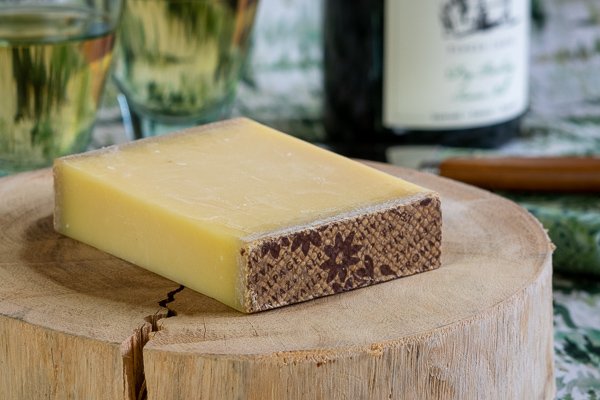Maybe you know this exceptional Swiss cheese, but probably you don’t. I rarely see it at retail counters. It doesn’t get much press. Yet it’s a benchmark cheese, in my view, made by ultra-traditional methods that are vanishing. Even in the rarefied world of Swiss alpine cheesemaking, it stands out for the stringent rules that govern its production. My favorite book on Switzerland’s cheeses, Swiss Cheese by Dominik Flammer and Fabian Scheffold, calls it “the most aboriginal of all Alpine cheeses.”
Ironically, L’Etivaz (the “z” is silent) is not an ancient cheese but a modern one. it originated in the 1930s, when a few dozen Gruyère cheesemakers decided that the regulations governing Gruyère had grown too lax and quality was slipping. They decided to leave the Gruyère system and develop a new cheese with more demanding requirements.
About 70 cheesemakers produce L’Etivaz in chalets in the Vaud Alps, at elevations between 1,000 and 2,000 meters. The cheese can only be made between May 10 and October 10 from the raw milk of grass-fed cows. For some of the producers in remote chalets, the season is even shorter.
Just about every step in the L’Etivaz recipe differs from how modern dairies make cheese.
L’Etivaz is always made where the cows are, with raw milk from a single herd. The milk doesn’t travel more than a few yards from the milking parlor to the cheesemaking chalet. And it’s never chilled. Refrigeration and pumping compromise cheese milk, altering both the protein and the fat, but of course refrigeration is a must when milk is collected from multiple farms and transported to a distant creamery, as it is for most cheese.
L’Etivaz production at chalet Rodomont-derrière
For L’Etivaz, cheesemakers leave the evening milk to stand overnight at room temperature so bacteria can grow. In the morning, they skim the cream, add the raw morning milk, some of the previous day’s whey as a culture, and animal rennet. They heat the resulting curds and whey in a copper cauldron over an open wood fire, a step that some say contributes a faint smoky aroma to the cheese. Every producer then sends their young wheels to the L’Etivaz cooperative cellars, where they are matured for at least five months on spruce shelves. Wheels are large, ranging from about 30 to 80 pounds.
L’Etivaz is like Gruyère on steroids, with more aroma, more flavor, more depth. I get a beefy, roasted-onion aroma with hints of bacon—the wood fire?—and hazelnuts. The texture is silky and creamy. I like to shave it with a cheese plane and let it melt on my tongue.
L'Etivaz production—about 16,000 wheels a year—doesn’t begin to meet the call for it. “The demand from France alone would suffice,” wrote Flammer and Scheffold. We are fortunate that American importers get some, albeit sporadically. For retail sources, look here, or reserve a seat in my “Seven Styles of Cheese” class to taste it with me.
For a more detailed look at L’Etivaz production, read Bronwen and Francis Percival’s enlightening feature in Serious Eats.


